In late 2017, thanks to incredible public support through our collection appeal, State Library Victoria was successful in acquiring View of the north shore, Port of Melbourne by Captain Wilbraham Frederick Evelyn (WFE) Liardet. Since 1862, this rare and vibrant watercolour of a bustling regatta in early Melbourne, had been in private hands. We are extremely excited to announce that the conservation treatment of this once hidden treasure is complete and that it is now on exhibition.
Before and after treatment: View of the north shore, Port of Melbourne (detail),
WFE Liardet, 1862
Condition
Like any centenarian, View of the north shore, Port of Melbourne was showing signs of a life well lived; a little diminished, a little discoloured, a little dog-eared. Closer examination by our paper conservators revealed three main deterioration processes in play: chemical, biological and mechanical damage.
The most conspicuous marker of chemical deterioration is the discolouration across the artwork, including a general brown tone to the paper support along with prominent vertical bands of staining. These alterations in the paper often occur when paper interacts with light, pollutants, or when a work has been in contact with non-archival materials. View of the north shore, Port of Melbourne likely suffered from all of these factors. For example, the staining along the left and right edges is a result of masking tape on the verso of the artwork. The sweeping diagonal stain extending down from the upper left edge to the lower edge, suggests the watercolour was once framed and that the glazing was cracked. The crack allowed the light and pollutants to concentrate through the gap, resulting in a defined curved stain across the watercolour.
Other deterioration factors include mechanical or physical damage, such as the distortion to the paper caused by the artwork being rolled, which no doubt contributed to the numerous creases, tears, abrasions and losses along the artwork edges. View of the north shore, Port of Melbourne also shows evidence of biological damage, which include numerous flyspecks and small areas of surface loss typical of hungry insects – not to be confused with Liardet’s ‘scratching-out’ technique.

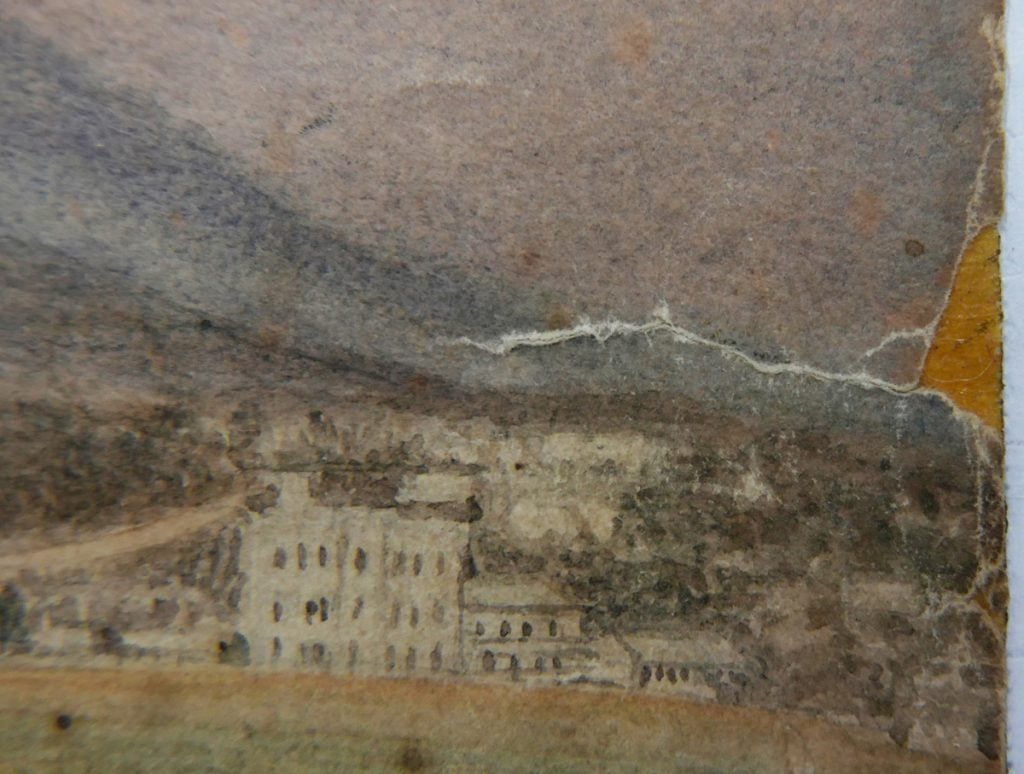
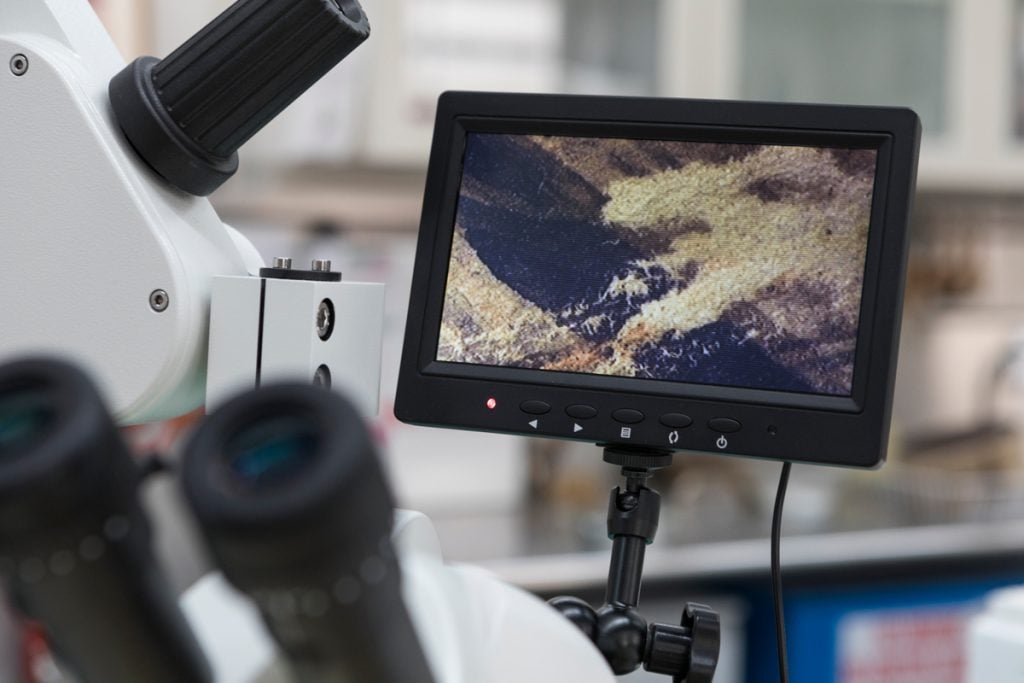
Conservation treatment
To prepare View of the north shore, Port of Melbourne for its return to public life, our conservators commenced a number of stabilising and stain reduction treatments. As with all major conservation treatments at the Library, the artwork was first photographed by the Imaging department for reference during treatment and as a future record.
The first step in the conservation treatment was to remove any loose surface dirt from the artwork in as gentle a manner as possible without damage to the surface. We used two different methods for the recto (front) and verso (back) of the work. A smoke sponge was gently drawn across the artwork surface, while a grated Mars Staedtler eraser and soft hake brush were used across the verso of the work.
The masking tape carrier was easily peeled away from the verso of the artwork, revealing a thick yellow adhesive mass on the paper surface. This was reduced mechanically using a scalpel. Two historic paper tape repairs were also removed using light moisture to reactivate and release the adhesive.

A series of tests were undertaken to develop a washing procedure to reduce any inherent acidity in the paper and staining across the artwork. First the pH (acidity/alkalinity) and conductivity (amount of ionic salts) of the paper were measured. This information assisted the conservators in formulating the washing solutions and tailoring the application method for washing the work. As part of the assessment, testing of the media was undertaken to determine any possible solubility issues that might arise during the washing procedure.

Once it was confirmed that moisture could safely be introduced to the artwork, our paper conservators undertook a series of tests using solvent gels to develop a method for the targeted reduction of the staining caused by the masking tape adhesive. A cellulose ether gel used in combination with two solvents was selected and this poultice was applied locally to small areas for short intervals. This resulted in a marked reduction of the stain.

To prepare for washing, temporary repairs of Japanese kozo paper and wheat starch paste was applied across the verso of the artwork, ensuring that all losses and tears were supported throughout this treatment phase.
The artwork was placed into a humidification chamber to pre-condition the paper for effective moisture uptake during washing. The artwork was then moved to the suction table and washed over thick blotter paper using three tailored washing solutions. The first wash was quite gentle, the second solution had chelating capabilities, and the third was a clearing rinse. The suction action drew the solutions through the artwork, moving any water-soluble deterioration products into the blotter. Simultaneously, a small amount of solvent was applied locally with a fine brush to reduce the more visually disturbing stains. The artwork was washed in this way a number of times until the deterioration products in the paper were considered to be exhausted.
The artwork was then dried between felts for two weeks. On examination it was revealed that the discolouration and stains had lessened considerably.
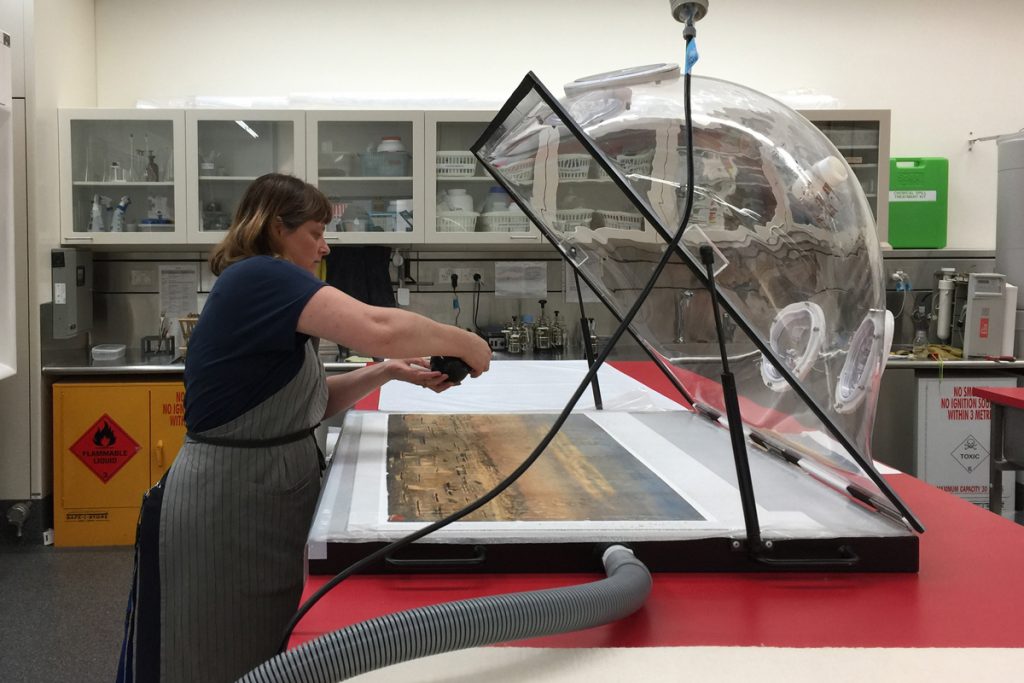
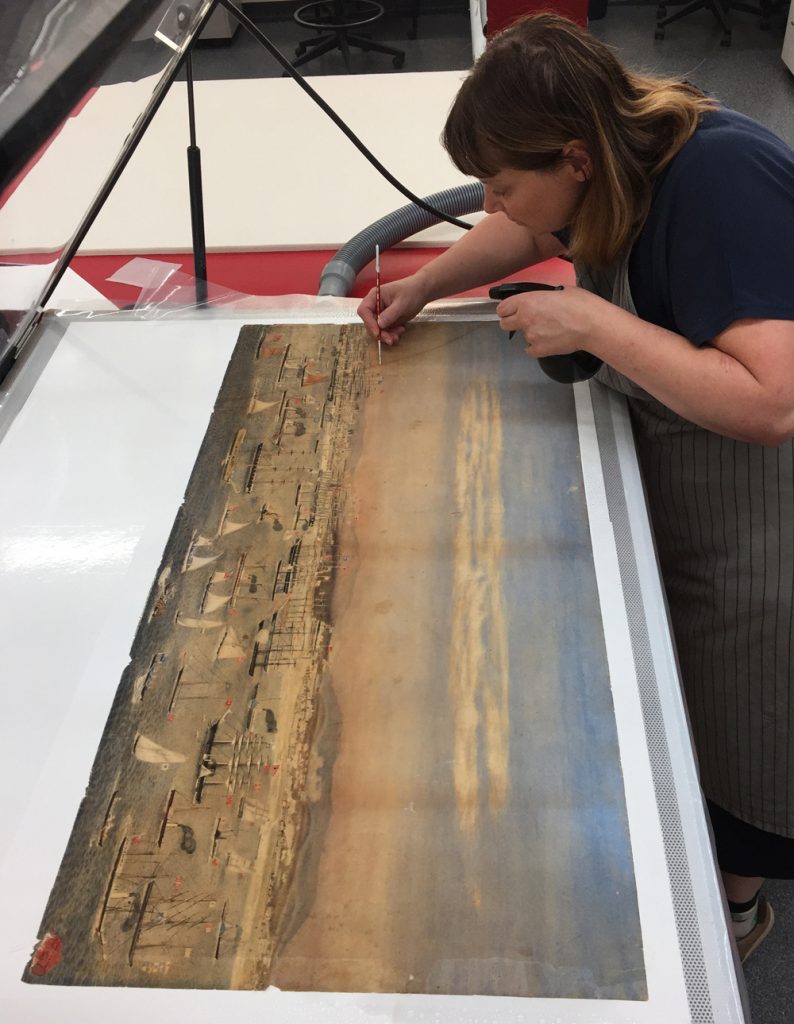
To return aesthetic unity, our paper conservators filled and in-painted a number of losses and tears across the watercolour artwork. The technique differed depending on the type of damage. Larger losses were compensated using Western paper fills (or ‘patches’), with the smaller cracks and tears filled with cellulose pulp toned to match using watercolour paints. Disturbing stains and marks were visually reduced using a combination of Carbothello pencils and powdered dry pastels.
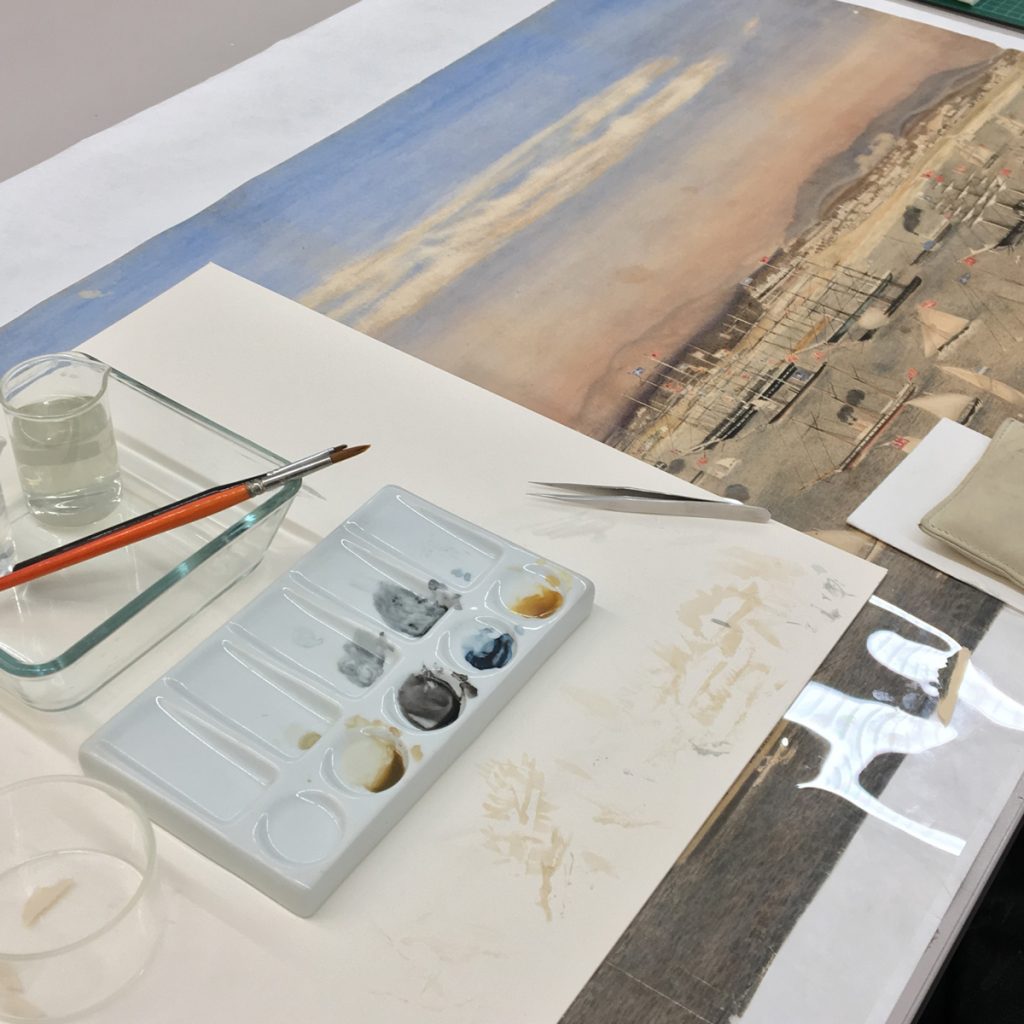
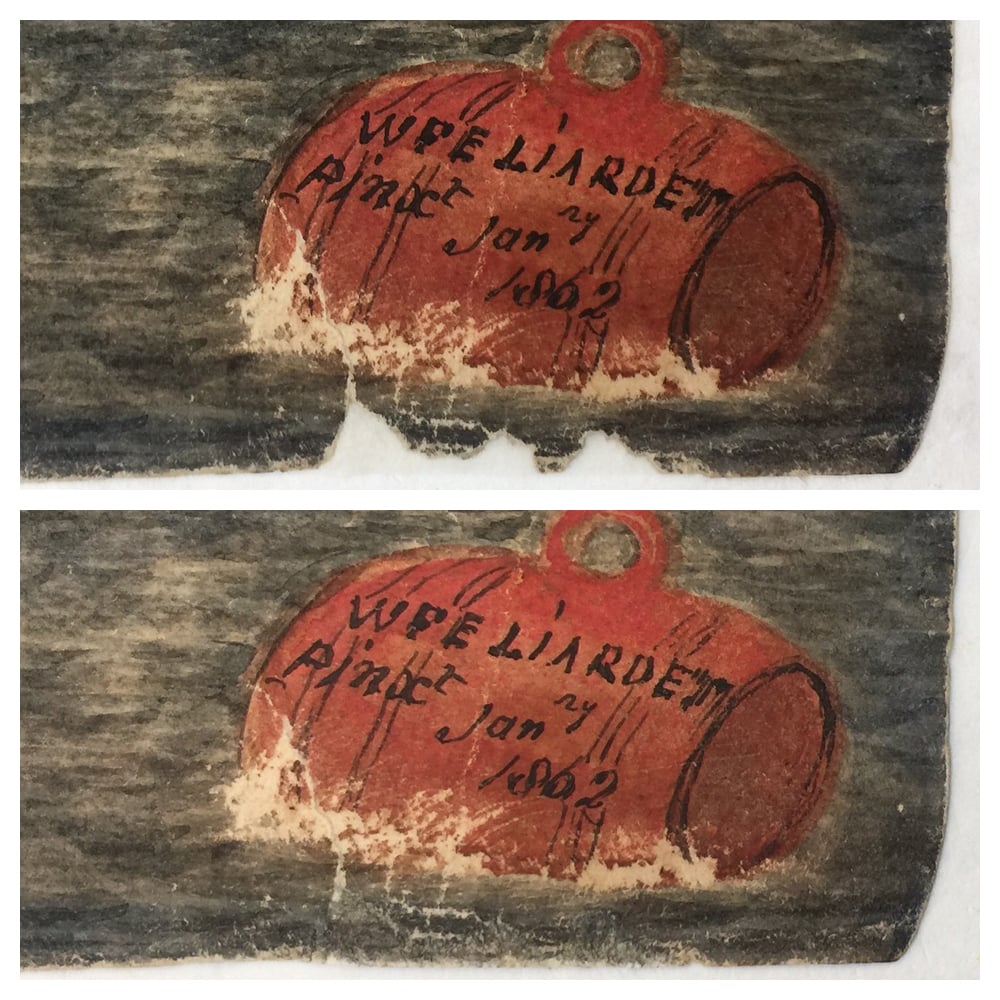
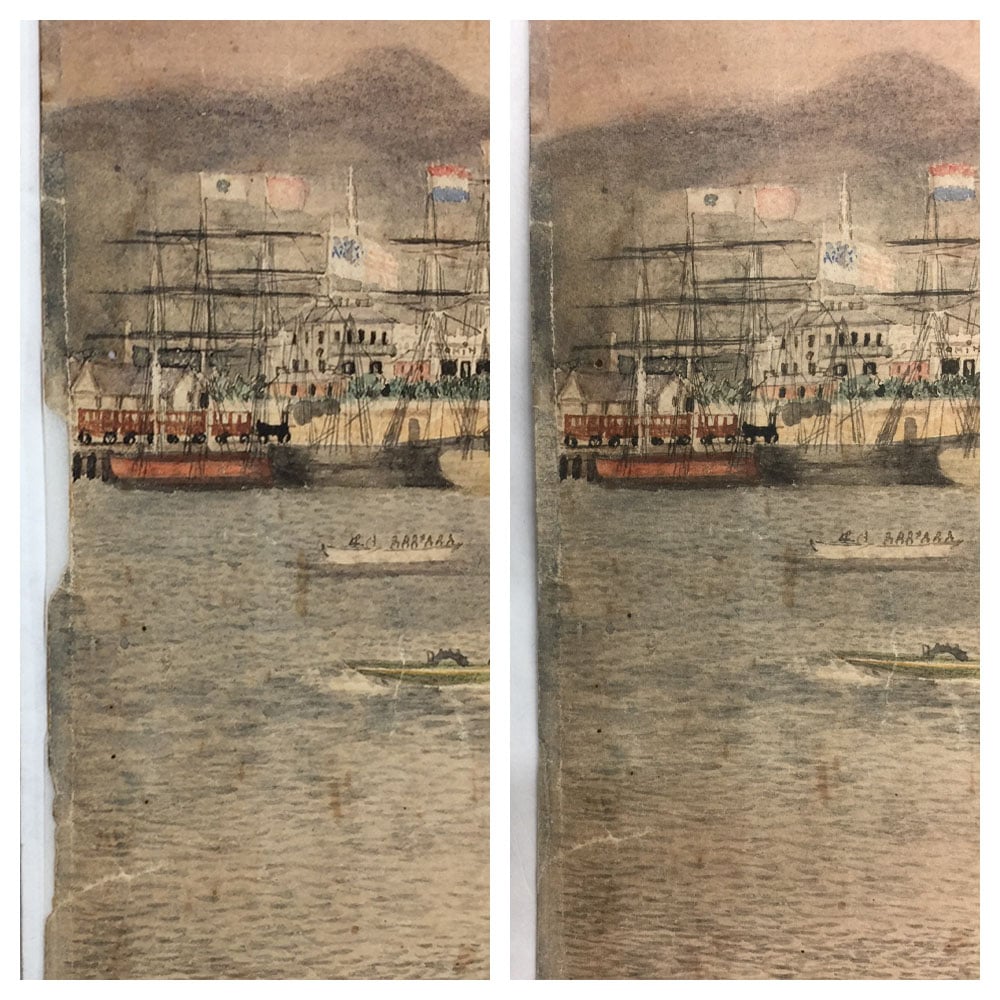
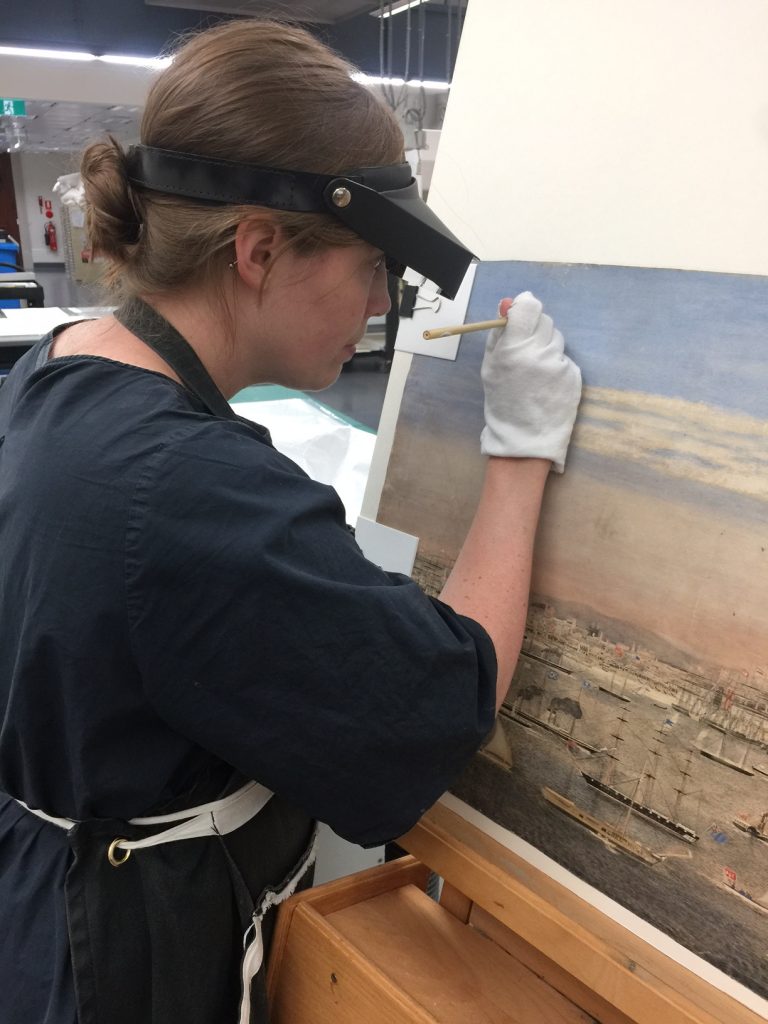
The conservation treatment has returned strength and aesthetic unity to this vibrant watercolour, and in doing so, has allowed this important artwork to be appreciated by the public and for many generations to come. View of the north shore, Port of Melbourne was unveiled in the Library’s the Changing face of Victoria exhibition in February and is now available online.

Zoom in with our image viewer

This important work was made possible by generous donations from the community. If you’d like to support our 2019 appeal to secure the Bruce Postle Archive, find out more here.
More to explore
- Visit The changing face of Victoria to see Liardet’s artwork on display
- View the digitised artwork online
- Watch a video about this watercolour
- Read more blog posts from our Preservation and Conservation teams
- Support the Library’s 2019 Bruce Postle Archive appeal

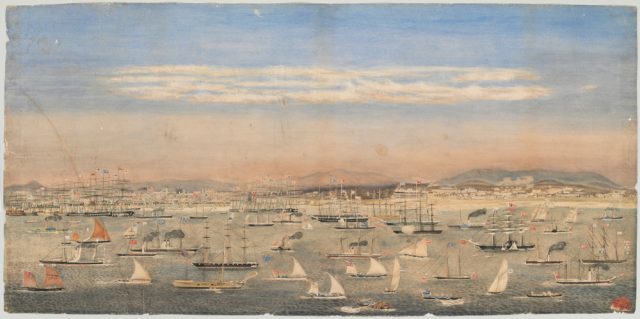


fantastic work ….many thanks .